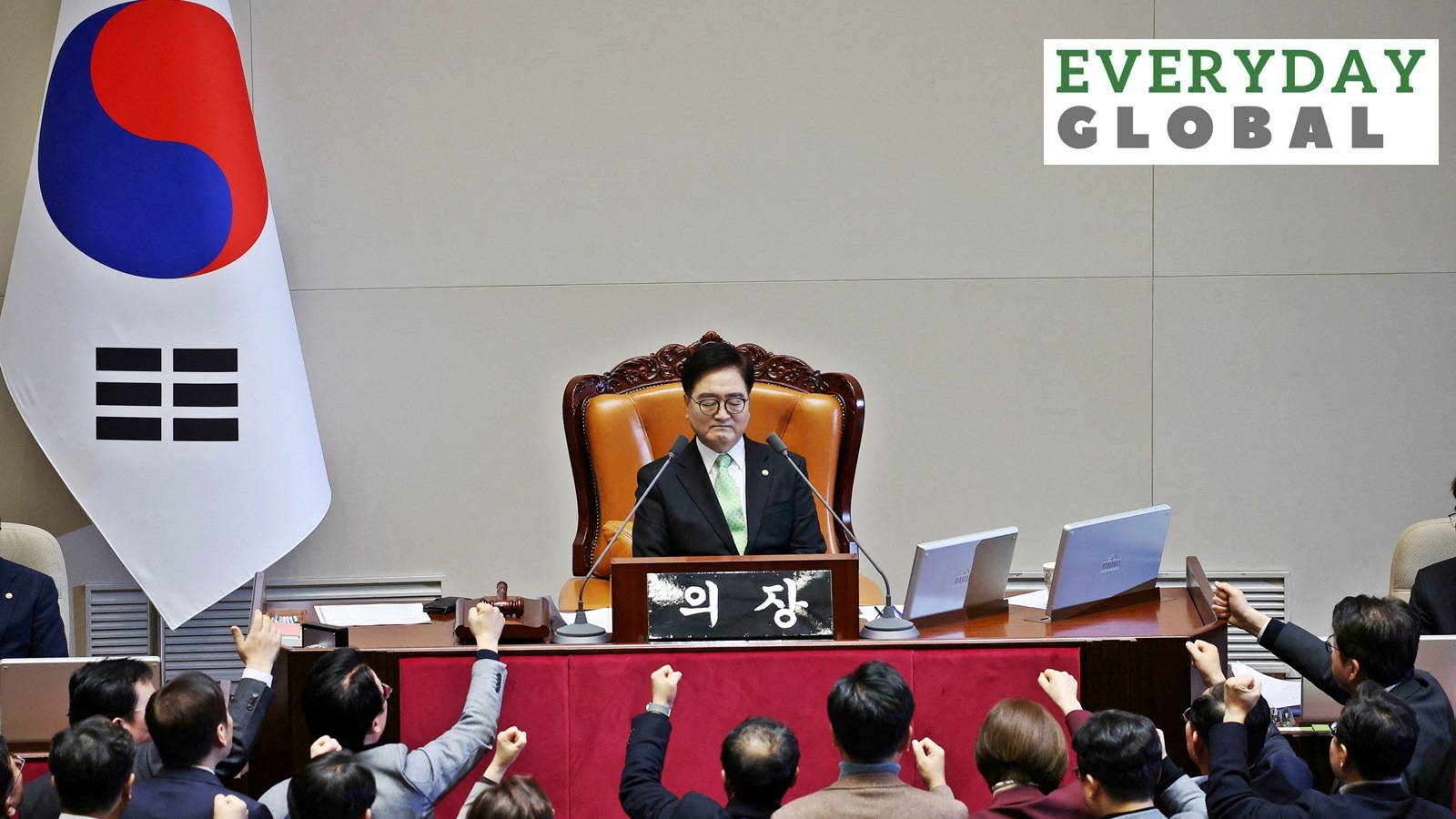Why has South Korea impeached its president – again?
President Yoon was impeached on December 14 following his failed bid to impose martial law. Why has the Acting President been removed now?
 South Korea’s ruling People Power Party lawmakers protest against National Assembly Speaker Woo Won-shik during the impeachment vote. (REUTERS/Kim Hong-Ji)
South Korea’s ruling People Power Party lawmakers protest against National Assembly Speaker Woo Won-shik during the impeachment vote. (REUTERS/Kim Hong-Ji)Less than two weeks after the South Korean Parliament impeached President Yoon Suk Yeol, the country’s legislative body on Friday (December 27) voted to impeach Acting President Han Duck Soo.
The latest development adds to the country’s recent political turmoil, although many of its problems stem from the 2022 presidential elections that resulted in Yoon assuming power. Here is why.
Why did the first impeachment happen?
To recall, Yoon was impeached on December 14 following his failed bid to impose martial law in South Korea. In early December, he claimed “anti-state” forces, including from North Korea, were posing a threat to the country.
A successful imposition would have allowed him to use the military to maintain order. In South Korea, martial law can generally be imposed in “wartime, war-like situations or other comparable national emergency states,” according to an Associated Press report.
However, political commentators and opposition members said Yoon did so to ease his government’s decision-making path since his conservative People Power Party (PPP) does not have the majority in Parliament. Soon after Yoon imposed the decree on December 3, there were protests in the capital Seoul. Six hours later, the decree was withdrawn.
The next day, 190 lawmakers of the 300-member National Assembly unanimously voted to reject Yoon’s declaration. Calls to impeach him began as well, including from some PPP members. Yoon apologised for his actions in a televised address to the nation but did not resign. On December 14, the Parliament impeached Yoon with 204 votes in favour.
So why is the interim president being impeached?
After Yoon, Prime Minister Han Duck Soo took over as Acting President.
A BBC report said at the heart of the current issue is Yoon’s impeachment, which needs to be upheld by the country’s Constitutional Court. Of the nine-member bench, at least six judges must vote for it. However, there are currently only six judges on the bench, lowering the chances of his removal.
The opposition Democratic Party (DP), attempted to appoint three more judges but Han blocked the move. Terming this a sign of allegiance to Yoon, opposition MPs brought forth a successful motion for his impeachment.
What happens now?
The Korean media agency Yonhap said Han will be suspended from his duties as soon as the impeachment resolution is delivered to him. As Han previously held the post of prime minister, Deputy Prime Minister and Finance Minister Choi Sang-mok will now serve as both the acting president and the acting prime minister.
What explains the recent political turmoil in South Korea?
Yoon assumed the presidency in 2022 following a close election, winning 48.56% of the vote, compared to the DP candidate’s 47.83%. Since then, his popularity has only fallen, with a Gallup Korea poll saying it reached 20% this September.
A Reuters report said respondents criticised his handling of medical reforms, the rising cost of living and his ability to communicate with citizens. In the parliamentary elections in April, the opposition DP made gains at the cost of Yoon’s PPP. The public also learnt this year that his wife accepted a luxury handbag from a US-based pastor months before the 2022 elections. It became a major scandal, adding to the public dissatisfaction with Yoon.
History of presidents losing power, popular protests
South Korea is often touted as a success story in terms of economic growth and how it rose from war to become a developed state within decades. But is no stranger to political turmoil, with much of its early history featuring autocrats and attempts to remove them from power.
Its first President Syngman Rhee, who came to power in 1948, was ousted in 1960. A students-led protest contested his government’s claims that it received more than 90 per cent of the vote in that year’s elections.
The following decade saw military leader Park Chung-hee seize power and hold onto it until his assassination in 1979. His rule was followed by another army man becoming president.
Chun Doo-Hwan was initially appointed to investigate Park’s assassination but ended up arresting several of his rivals and terming them suspects. He ruled with an iron fist from 1980 to 1988 and was given a death sentence at the end of his term for a bribery case, but later received a pardon.
The country fully transitioned into a democracy in the 1980s, but it has not always been smooth sailing. President Roh Moo-hyun (2003 to 2008) died by suicide following a corruption investigation after he left office. Ex-president Park’s daughter Park Gyeun-hye became the country’s first woman president in 2013 but had to leave office in 2017 following mass protests. She was sentenced by a court for abuse of power and corruption, though she later received a pardon.
- 01
- 02
- 03
- 04
- 05






































